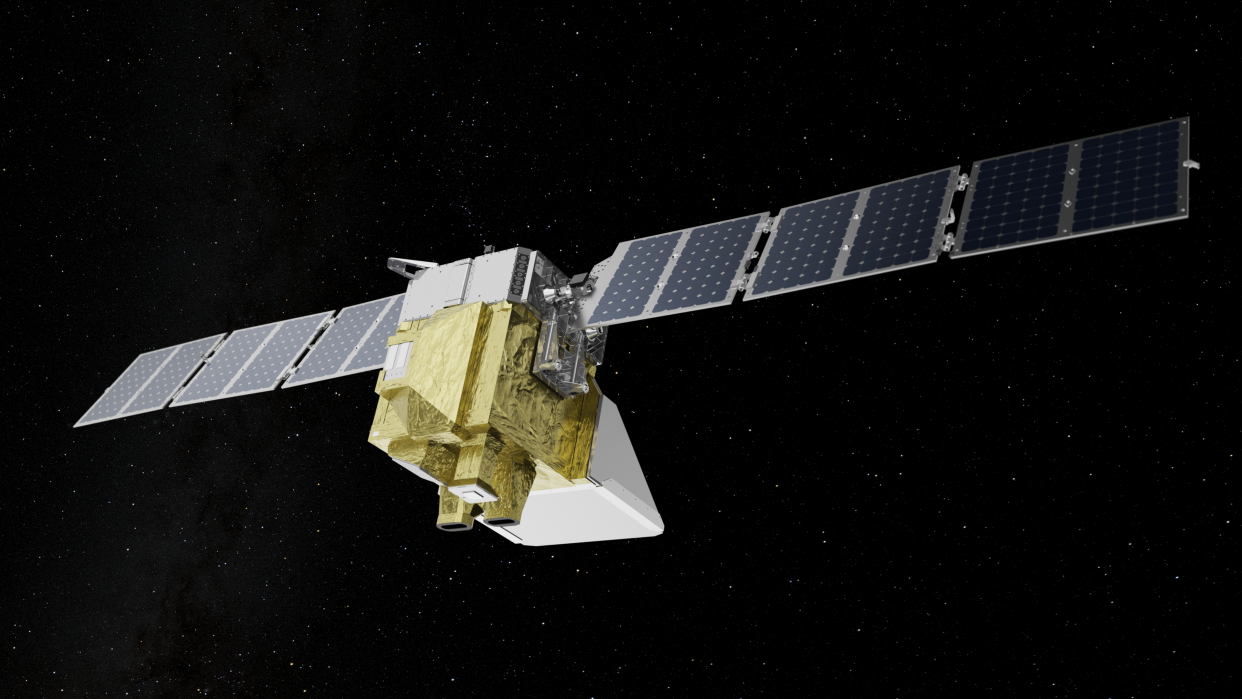New satellite will 'name and shame' large-scale polluters, by tracking methane gas emissions
VANDENBERG SPACE FORCE BASE, Calif. ‒ A refrigerator-sized satellite designed to measure emissions of climate-changing methane gas was shot more than 300 miles above the Earth's surface Monday on the back of a SpaceX rocket.
Known as "MethaneSAT," the $88 million spacecraft was designed and built for the international nonprofit Environmental Defense Fund, which will use the data in part to "name and shame" large-scale polluters, including oil-and-gas drilling companies, large livestock operations and even landfills, along with the governments that are supposed be regulating them.
Although other satellites can track overall methane emissions, and airplanes can measure small areas accurately, MethaneSAT will provide a comprehensive overview of methane emissions globally ‒ including from countries typically unwilling to permit scientific observation, like Russia, Venezuela and Brazil.
"For the first time we have a tool that is not only going to be able to hold industry accountable, but also for the first time hold governments accountable," said Mark Brownstein of EDF. "This information will enable us all of to know whether the government is doing what it is supposed to be doing."

A colorless, odorless gas, methane is the primary component of natural gas, which many utilities burn as a cleaner alternative to coal or oil.
But it also is a potent greenhouse gas that escapes from oil wells and pipelines, and is also released by livestock and decaying organic matter in landfills.
EDF plans to publicly post the data online. Many governments, including the United States and some individual states, regulate methane emissions but lack the data to make realtime enforcement possible. A company, for instance, might not recognize for months that its methane-capture system has stopped working.
New Zealand helped fund the satellite launch, along with private donors to EDF. Experts say methane could cause more climate change over the next decade than the carbon released from burning fossil fuels.
Built in Colorado, the satellite roared into space Monday afternoon atop a SpaceX rocket launched from the California coast. EDF officials said it will likely take several months for them to get the satellite fully operational. Once running, it will be able to measure emissions in 30 target areas daily, allowing scientists to quickly model how emissions are changing over time.
Experts say reducing the amount of methane released into the atmosphere can slow climate change. Internationally, more than 100 countries have pledged to reduce their methane emissions by 30% by 2030. China, India, the United States, Russia and Brazil are among the largest methane emitters, according to the International Energy Agency.
In many cases, methane emitters can cheaply and easily stop their leaks, EDF said, but have typically lacked solid data on which to act. And because methane isn't easily visible to the human eye, regulators may have a harder time stopping leaks as compared to a visible oil spill.
“You can’t manage what you can’t measure, and that’s certainly true when it comes to cutting methane, one of the biggest drivers of climate change,” former New York City Mayor Michael Bloomberg, who is now the U.N. Secretary-General's Special Envoy on Climate Ambition and Solution, said in a statement. “Data from this satellite will help us to better measure methane emissions and target their sources, bringing more transparency to the problem, giving companies and investors the information they need to take action, and empowering the public to hold people accountable.”
This article originally appeared on USA TODAY: Satellite will track emissions, 'name and shame' large-scale polluters
